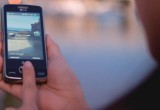Rumors: Biometrics imminent for next generation Apple devices
28 May, 2013
category: Biometrics, Corporate, Digital ID
Early reports from Taiwanese components suppliers suggest that the next iteration of the iPhone – likely the 5S – will feature capacitive-touch, sapphire crystal Home buttons that will support a new form of fingerprint scanning.
According to a report on the iPhone 5 News Blog, Taiwanese-based TechNews, who claims to have contacts within Apple’s chain of suppliers, has revealed that Apple has opted to use sapphire crystal for iPhone’s Home button.
Apple acquired fingerprint sensor giant Authentec last year and rumos of adding biometrics to the next handset have been rampant. The inclusion of sapphire crystal – a material with a hardness second only to diamond – makes sense. The Home button is perhaps the most heavily used component of any iOS device, and the proposed implementation of fingerprint-scanning technology would certainly benefit from the hardware.
This is not the first time that the virtually scratch-resistant sapphire crystal has been used on iOS devices, as the same material comprises the iPhone 5’s camera lens. The inclusion of the new Home buttons makes sense for a 5S release, as no other significant hardware alterations are expected for the next iPhone leaving sufficient resources available for the new biometric technology.
While the next iPhone is not expected to receive a major overhaul, Apple’s iWatch – expected to drop late 2014 – may turn heads.
The iWatch has teased Apple fans before, but a recent release from TrustedReviews.com suggests that despite the slipping release date, the device is sure to promise a slew of biometric functionality.
Ming-Chi Kuo, an Apple insider and analyst with KGI Securities, believes that the Apple iWatch will feature a secure user identification mechanism that will be used in conjunction with biometric technology. He believes that the iWatch’s proposed biometric capabilities would enable the wrist-worn computer to safeguard itself against fraudulent access to private and sensitive data.
Kuo goes on to reveal that, the device will boast a 1.5-inch touch screen – which contradicts previous reports that the iWatch would have a wrap-around, flexible screen.
The most interesting aspect of this latest report on the iWatch is Kuo’s thoughts on the purpose of the device.
Kuo believes the iWatch won’t be designed as a time-telling device, nor will it display information from other Apple products. Instead, Kuo is positive that the iWatch’s wearable design makes it ideal for offering more secure user identification and biometrics functionality.




